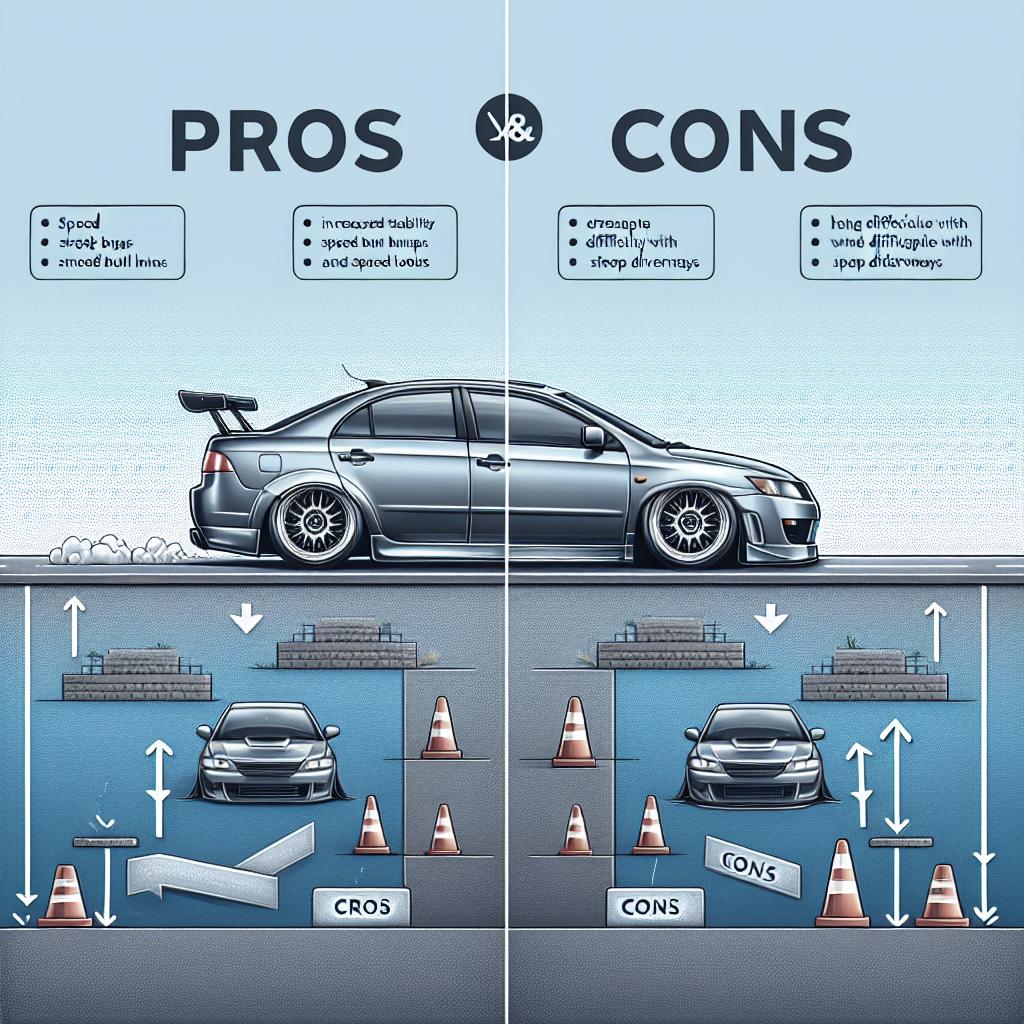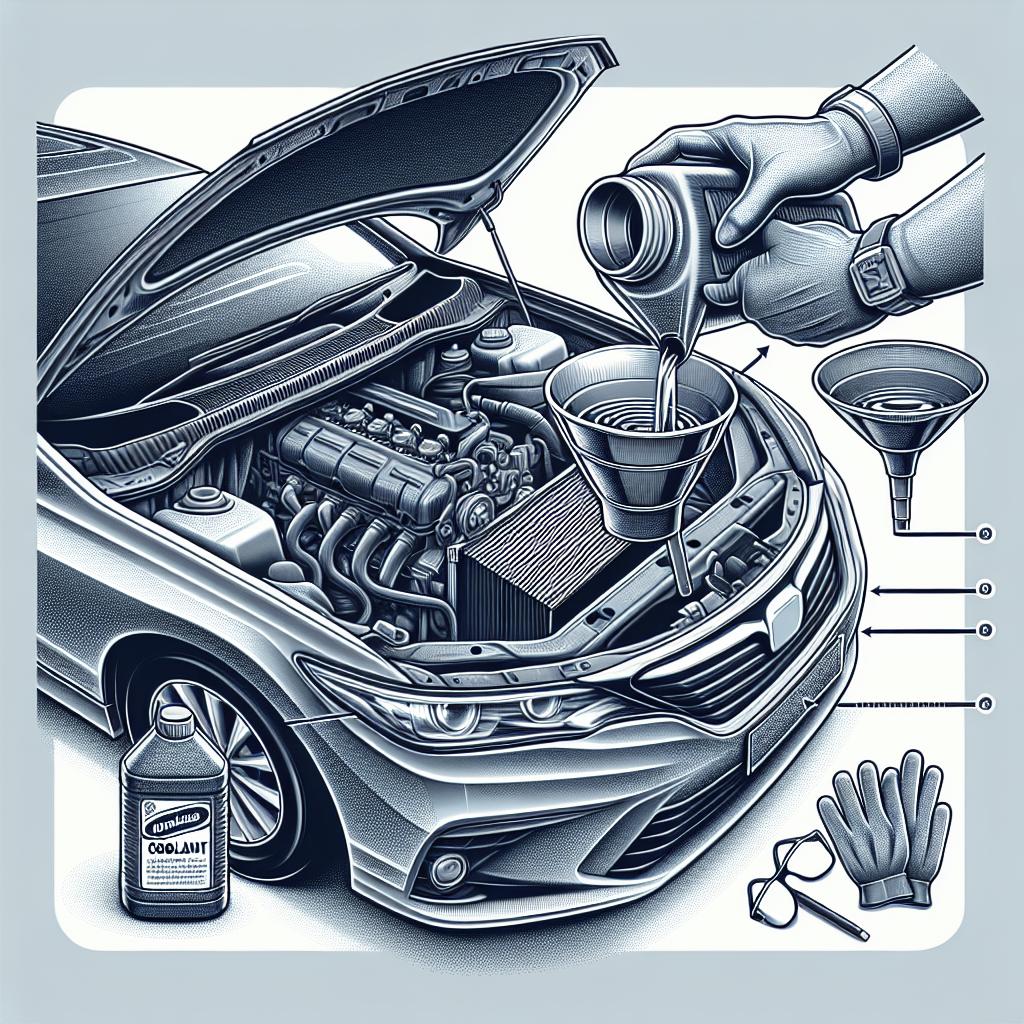“`html
The Pros and Cons of Lowering Your Car
Modifying your car can be an exciting endeavor, offering both aesthetic appeal and performance enhancements. Among the most popular modifications is altering the car’s suspension. Whether you choose to lower or raise your vehicle, each option comes with its own set of advantages and drawbacks. In this blog post, we will explore the impact of lowered suspension, including the stylistic benefits and handling improvements, as well as potential challenges such as ride quality and clearance issues. We’ll also touch on raised suspension to provide a comprehensive overview. By the end of this post, you’ll have a clearer understanding of how these modifications can affect your driving experience and what to consider before making changes.
Lowered Suspension
Advantages
Lowering your car is often pursued for its enhanced aesthetic appeal. A lowered suspension gives your vehicle a sleek, aggressive stance that can turn heads. The closeness of the wheels to the body can create a sportier look, which many car enthusiasts find desirable. Beyond aesthetics, a lowered suspension can also improve handling. Dropping the vehicle closer to the ground lowers the center of gravity, which can enhance cornering speed and reduce body roll. This modification can translate into a more responsive and enjoyable driving experience, particularly for those who frequent winding roads or race tracks.
Additionally, a lowered suspension can improve aerodynamics. By reducing the amount of air flowing underneath the vehicle, drag can be minimized, potentially improving fuel efficiency and speed. While the aerodynamic benefits are more pronounced on race tracks, they can still offer some advantages in typical driving scenarios. Furthermore, with proper tuning, a lowered suspension can improve traction and grip, optimizing the performance of high-power vehicles.
Disadvantages
Despite its many advantages, a lowered suspension can also introduce several challenges. Primarily, lowering the height can lead to reduced ride comfort. When the suspension is stiffer and the clearance between the road and car frame is minimized, the vehicle may transmit more road imperfections to the cabin. This change can result in a harsher ride, particularly on uneven surfaces.
Clearance issues are another concern with lowered suspensions. The reduced distance between the vehicle’s undercarriage and the road can make it more susceptible to scraping on bumps, potholes, and curbs. This is particularly problematic in urban environments or on unpaved roads. It can lead to damage to the car’s bodywork and mechanical components. Additionally, a modified suspension may also impact tire wear and may require more frequent alignment adjustments.
Raised Suspension
Advantages
Alternatively, some drivers prefer raising their vehicle’s suspension, particularly for off-road or recreational purposes. A raised suspension increases the ground clearance, allowing drivers to navigate rough terrains without the fear of damaging their vehicle’s underbody. This advantage is significant for off-road enthusiasts who frequently encounter rocks, mud, and other obstacles.
Raised suspensions can also improve the vehicle’s visibility. Sitting higher on the road not only allows for better views of the terrain ahead but can also afford an imposing look that some drivers find appealing. Although less common for sports cars, truck, and SUV owners often opt for this modification to enhance both form and function, particularly when driving off the beaten path.
Disadvantages
However, raising your car’s suspension can also have drawbacks. By increasing the center of gravity, a raised suspension can negatively impact handling, making the vehicle more prone to body roll and reducing stability during cornering at higher speeds. This change can be a trade-off for those who prioritize maneuverability and precise handling in their driving experience.
Furthermore, raising a vehicle’s suspension may alter its aerodynamics, potentially decreasing fuel efficiency and increasing wind resistance. The additional height can increase the frontal area of the vehicle, thus affecting its performance on highways. Raised suspensions can also complicate entry and exit from the vehicle, especially for shorter drivers or passengers.
Modifying Your Car
Before embarking on car suspension modifications, it is crucial for vehicle owners to consider their overall goals and driving needs. Modifying suspension is not merely cosmetic – it fundamentally alters how a vehicle drives and should be approached with a clear understanding of both benefits and limitations. Professional installation and tuning are key to ensuring that your modifications enhance your driving experience rather than hamper it.
It is also essential to understand local regulations regarding vehicle modifications, as laws can vary significantly. Improper modifications can lead to legal consequences, such as fines or penalties, and may impact vehicle insurance. Therefore, with any modifications, a balance must be sought between performance enhancements, safety, legal considerations, and personal preferences.
As technology and innovation continue to evolve, the options for vehicle modifications will expand, potentially offering new opportunities for customization without compromising functionality or safety. Staying informed about the latest trends and technological advancements is crucial for car enthusiasts aiming to make informed decisions about their vehicle’s performance and aesthetics.
Future Prospects
| Suspension Type | Advantages | Disadvantages |
|---|---|---|
| Lowered Suspension | – Enhanced aesthetic appeal – Improved handling and aerodynamics |
– Reduced ride comfort – Clearance issues |
| Raised Suspension | – Increased ground clearance – Improved visibility |
– Impaired handling – Reduced fuel efficiency |
“`


